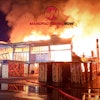While most have heard of it, what most fail to note is all of the positive work done by zeppelins, blimps or air ships like the Hindenburg. Before catching fire 200 feet over Lakehurst, New Jersey in 1937, the Hindenburg had successfully transported people and parcel across the Atlantic Ocean for several years.
In its prime, it could go from Germany to the coastal U.S. in under two days – half the time of an ocean liner. However, when an electrical discharge came in touch with its hydrogen fuel, 35 people perished, and so did any mainstream use of the technology.
However, with the current costs of fuel, environmental pressures and security precautions associated with ocean-faring ships and airplanes, the air ship is getting another look. In addition to consuming less fuel during launch and travel, significant cost savings could be realized by eliminating the transfer of people or packages that accompany the use of cargo planes, ships, railroad or semis.
Due to their size, air ships could be loaded and sent towards their destination non-stop. This makes them faster and potentially more cost-effective because they eliminate multi-modal transport dynamics and short-term storage.
Lockheed Martin also points to their Hybrid Airship technology as an effective way of transporting personnel and fully-constructed equipment to remote locations.
Last week, the part blimp, part plane Airlander 10 was launched outside Bedfordshire in the UK.
Developed by Hybrid Air Vehicles, it can travel up to 90 mph, stay aloft at 16,000 feet for two weeks, handle over 11 tons of passengers and cargo, and uses lightweight material to keep fuel consumption lower than a plane. And unlike the Hindenburg that ran on highly combustible hydrogen, “the flying bum” – so nicknamed because of its bulbous design, runs on non-flammable helium.
The biggest current obstacle to air ships is finding places large enough to land them. The Airlander 10, for example, is longer than a football field and taller than a nine-story building.






















